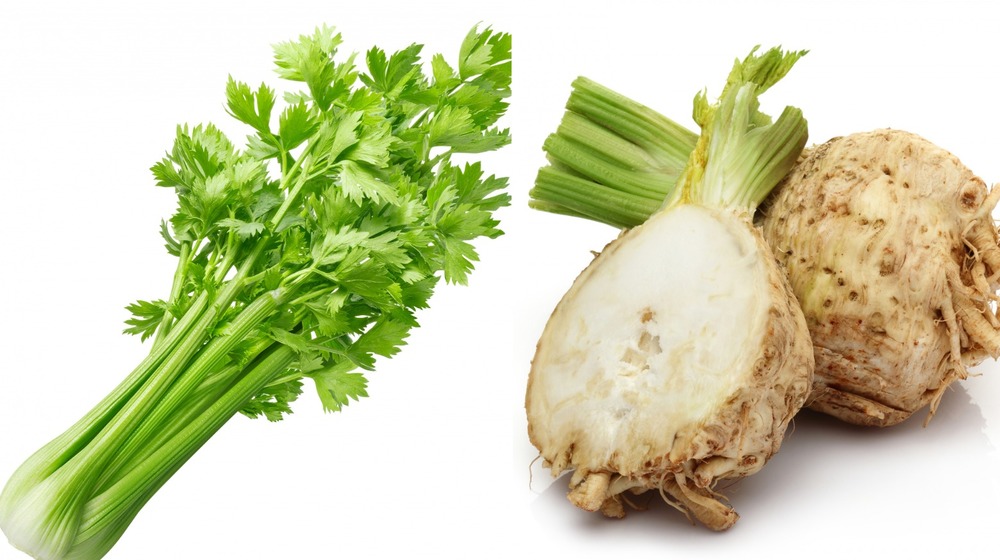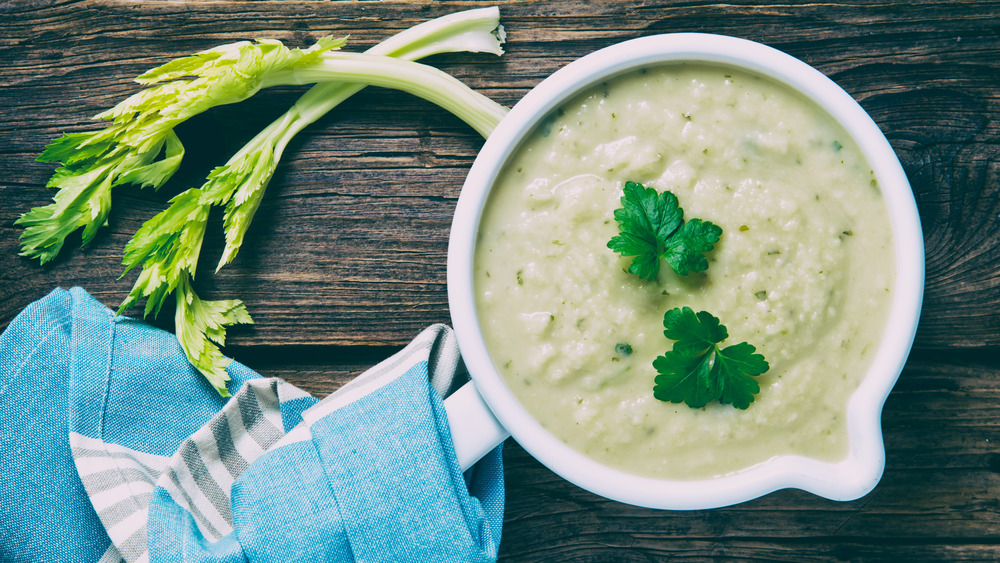This Is What Makes Celery And Celeriac Different From Each Other
Although celery and celeriac are kissing cousins, celeriac (aka celery root) is not the root of the celery you buy at the store (via What's Cooking America). Both come from the same family of vegetables (which includes carrots, parsley, and parsnips, per Science Direct), but farmers grow celery for its edible leaves and stalks and celeriac for its roots. Both the root and stalks taste like "celery," but celeriac tends to be earthier and more intense. And although both can be eaten raw or cooked, their textures are wildly different and often not interchangeable when cooking (via The Kitchn).
Raw celery is a prized addition to salads, and the crunchy stalks are frequently served with dips and spreads or stuffed and served as an appetizer (think ants-on-a-log). Cooked celery is used to create a base layer of flavor (especially when combined with onions and garlic) in soups, stews, stocks, and casseroles (via Britannica).
Nutritionally, according to Live Science, one cup of chopped celery contains 16 calories, 1 gram of carbohydrates, zero protein, and zero fat. Celery also contains beneficial vitamins, minerals, and phytonutrients with anti-inflammatory properties. And, unlike many other vegetables, celery retains most of its nutrients even when steamed.
Peel off the ugly exterior and unlock celeriac's versatility
Underneath the gnarly skin of the bulbous celeriac lies an ivory-colored vegetable that makes a great alternative to potatoes, parsnips, carrots, and other starches (via NPR). Raw celeriac has a refreshingly crisp texture, making it a unique and wholesome addition to colorful salads and creamy coleslaws. When cooked, celeriac sweetens slightly and is delicious when mashed, baked, roasted, or boiled (via Healthline).
One cup of raw celeriac contains 65 calories, 14 grams of carbohydrate, 2 grams of protein, and zero fat (via the USDA). Celeriac is rich in vitamins C and K, which boost bone and heart health, and because it's a root vegetable, it may reduce the risk of diabetes (via Medical News Today).
Epicurious described the flavor of celeriac as "celery meets parsley" and delivers recipes using the knob in countless ways, including hearty soups, creamy bisques, fine purées, and mashed and roasted side dishes. Chatelaine calls celeriac a winter "savior" and transforms it into some incredibly creative dishes, such as celeriac Schnitzel, ramen, noodles (yes, like zoodles), shawarma, fritters, and as a topping for cottage pie (aka shepherd's pie). The Kitchn grates raw celeriac into salads, adds chunks of the flesh to soups and stews (for that classic root-vegetable vibe), and declares that the root makes a perfect a gratin (with or without the addition of potato) and silky purée.

